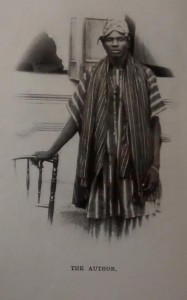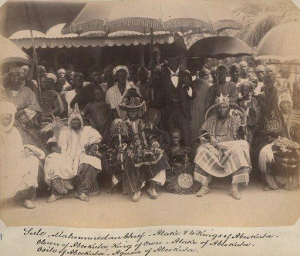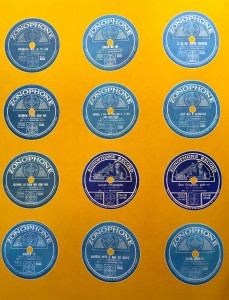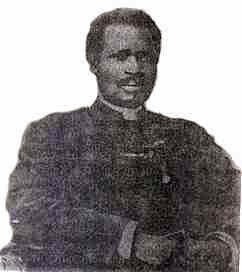This is Part Three of a series posts about Professor Brennan’s new research on Rev. J.J. Ransome-Kuti and the history of Yoruba gospel music. Here are links to the earlier posts: Part One and Part Two.
I want to build on my previous post about how Reverend J. J. Ransome-Kuti negotiated old and new ways of life for Yoruba communities in colonial Nigeria by talking about how Ransome-Kuti’s music was a part of that dynamic. Despite the overwhelming attention to issues of language and translation by missionaries who attempted to present Christianity in terms that local Yoruba communities could understand, music was also seen as key to attracting converts as well as for their properly adopting Christian practices. Hymn singing was central to Christian evangelism, and harmoniums and hymnals were part of the cargo sent to West Africa along with Bibles and other religious tracts. Missionaries ideally sought to use the words and tunes of the hymns in order to arouse the emotions of a religiously awakened congregation.
Early musical practices in Yoruba mission churches involved translating English hymns directly into the Yoruba language and then fitting those lyrics to the appropriate melodies and harmonies hen they were performed. This practice resulted in what the musicologist Akin Euba has called “an unhappy cultural marriage.” The mismatch between Yoruba lyrics and English hymn tunes was due to the fact that the tonal nature of the Yoruba language was often distorted by the melodic contour of a given song. The Yoruba language relies on three tones—high, medium, and low—in order to distinguish semantic meaning. Translating English hymns into Yoruba, and then applying those Yoruba words to the already existing melody that was written without regard to the tonal requirements of the language potentially rendered the lyrics meaningless or at best altered their meaning unintentionally.
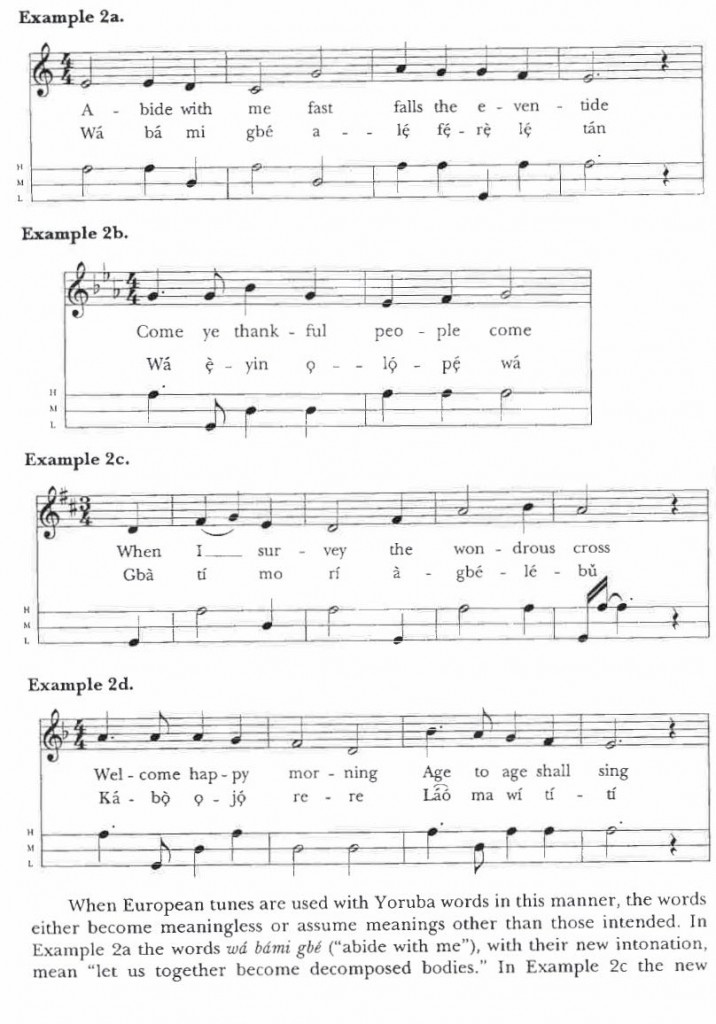
Akin Euba explains the tone-tune discrepancy in translating English songs directly into Yoruba. From Euba, A. 1989, “Yoruba Music in the Church”
It was for this reason that early converts—and indeed the missionaries themselves, many of whom came from Yoruba communities and spoke Yoruba fluently—endeavored to compose original tunes to Yoruba hymns. One of the earliest records we have of such compositions may be found in the letters of James White, a Yoruba pastor assigned to the Church Missionary Society mission at Ota, outside of Lagos. White encouraged the production of local hymns and Christian songs, noting that Yoruba communities were skilled at using music and poetry to praise religious figures. His letters from 1857 included the following observation: “Our converts, when heathens, certainly had hymns and songs of praise in honor of their gods—might they not also, now that they are Christians compose songs and hymns in honor of the God of gods?” White’s letters also included a pamphlet entitled “Orin, Ati Iyin si Olorun” (“Hymns and Praises for God”) which contained printed lyrics and translations of hymns composed by church members.
While the efforts of White’s congregation represented an early move towards the development of a corpus of indigenous hymns among the Yoruba, shifts in the nature of evangelism and the understanding of the role of Christianity in the new social and political order of the colony at the turn of the twentieth century further encouraged such practices. In response to a shift in mission policy away from “native governance” of mission affairs, many Yoruba clergymen reacted to European assertions of African inferiority through a revaluing of Yoruba culture. Yoruba pastors and scholars developed an increased interest in Yoruba history, religion, and politics which resulted in the first books written in English by Yoruba authors concerning Yoruba history and culture. These included Samuel Johnson’s History of the Yorubas (manuscript completed in 1897, published in 1921) and James Johnson’s Yoruba Heathenism (1899).
Proponents of this perspective articulated a form of cultural nationalism that claimed that conversion to Christianity did not necessarily require a wholesale adoption of European or English ways of life. Mojola Agbebi, a leader of this movement, argued in an influential speech given in 1902 that certain practices were not essential to being a Christian but instead interfered with what he saw as the African achievement of a Christian identity identity:
Prayer-books and hymn-books, harmonium dedications, pew constructions, surpliced choir, the white man’s style, the white man’s name, the white man’s dress, are so many non-essentials, so many props and crutches affecting the religious manhood of the Christian African.
In this speech Agbebi suggested that the style or form in which Christianity was practiced was not important. Agbebi began a process in which Christianity became unlinked from “whiteness” and cultural aspects which were seen as being European not African. In this way Christian practice became open to the inclusion of African modes of expression.
In a sermon later that year Agbebi expanded further on the ways in which Christian musical practices could be “Africanized”:
It was recorded of the early disciples that after the Celebration of the Last Supper ‘they sang a hymn,’ yet it should be remembered that neither the harmonium, nor the organ, nor the piano was known to them. Our dundun and Batakoto, our Gese and Kerikeri, our Fajakis and Sambas would serve admirable purposes of joy and praise if properly directed and wisely brought into play. (…) In the carrying out of the function of singing, therefore, let us always remember that we are Africans, and that we ought to sing African songs, and that in African style and fashion.
In this sermon Agbebi articulated a particular conception of Christianity connected to a newly developed sense of historical time and global space as he attempted to account for the location of Africans—particularly Yorubas—within a wider Christian historical framework. His call to “sing African songs” in an “African style and fashion” suggests that singing itself was an important aspect of Christian practice, not the nature of the song itself, which should be suited to the linguistic and emotional preferences of the person singing the song. Agbebi’s comments here also spoke to the way in which musical practice could become compelling for Yoruba Christians through the integration of African musical practices for the purpose of joy and praise.
Ransome-Kuti’s corpus of sacred songs was part of this movement towards the Africanization of church music. In addition to composing new hymns that began with Yoruba lyrics and adapted melodies to suit them, he also took the bold step of adapting indigenous tunes to newly composed Christian words. A selection of his hymns, entitled Awon Orin Mimo Ni Ede Ati Ohun Wa (Sacred Songs in Our Language and Intonation), was published by the CMS bookshop in Lagos in 1925. In addition, 57 of his songs were published as an appendix to the standard Yoruba hymnbook (1923), and editors noted his contribution in the Preface by writing:
No tune, however, can possibly express the meaning of words in a “tonic” language such as Yoruba, so well as one written specifically for the words. Great thanks are therefore due to the Rev. J. J. Ransome Kuti for his contribution of original airs, which express the genius of Yoruba music, and will, for that reason, be greatly appreciated.
Unfortunately, no such note of acknowledgement exists to account for the Ransome-Kuti’s recording of his songs in 1922, though we might make a reasonable assumption that they were also part of this movement for greater autonomy for Yoruba clergy and indigenization of Christianity in Yoruba communities. I hope through future research to substantiate this assumption.


